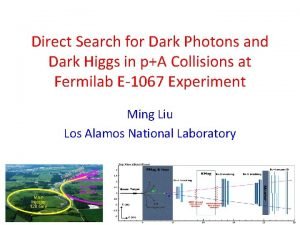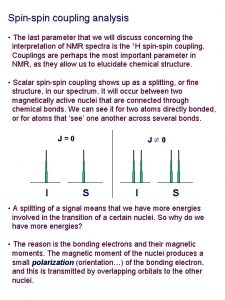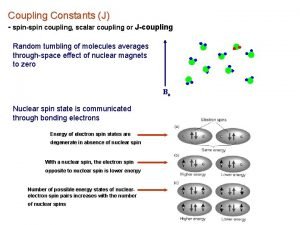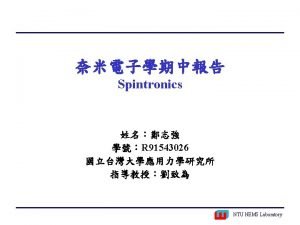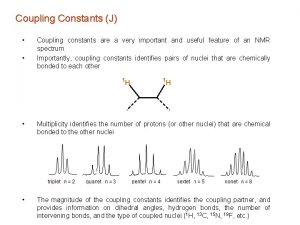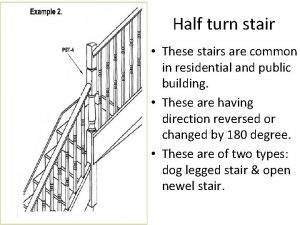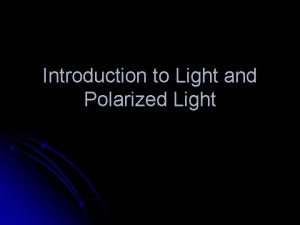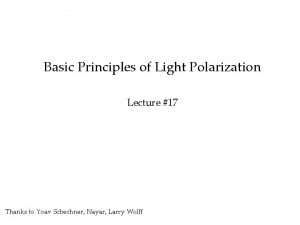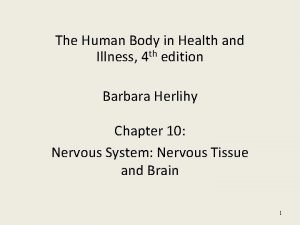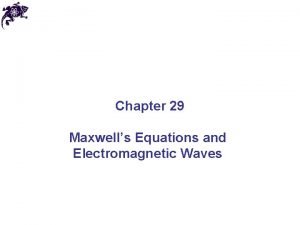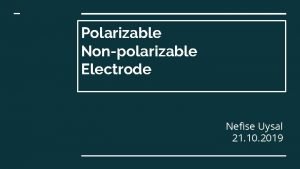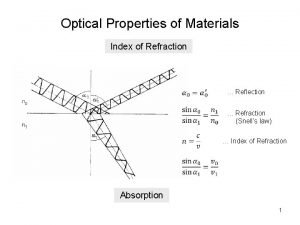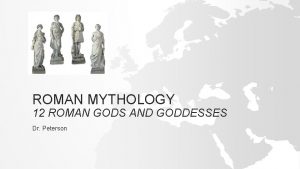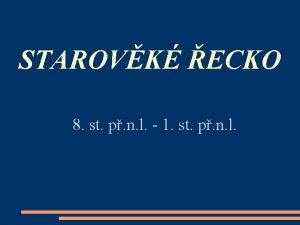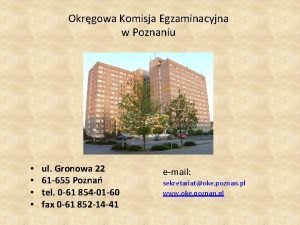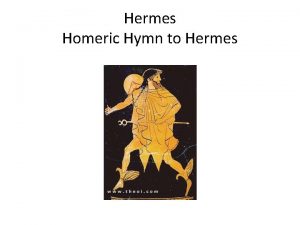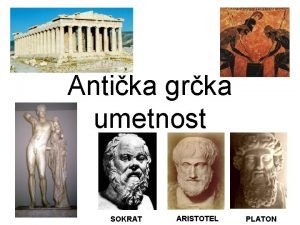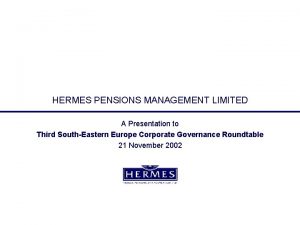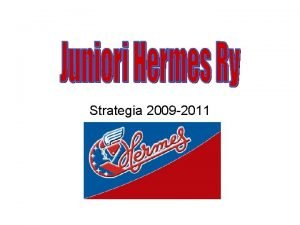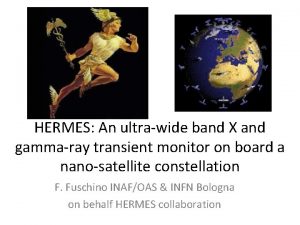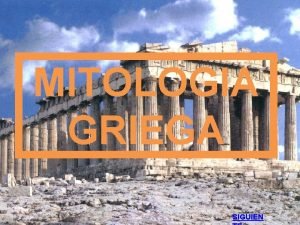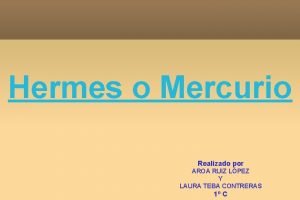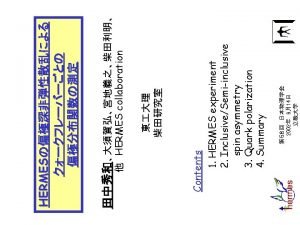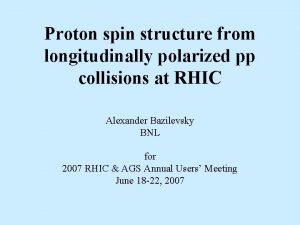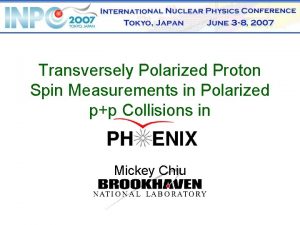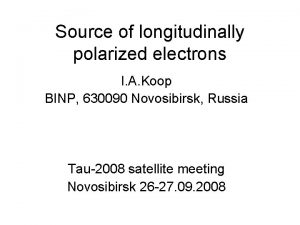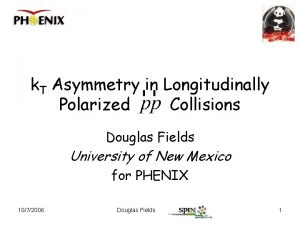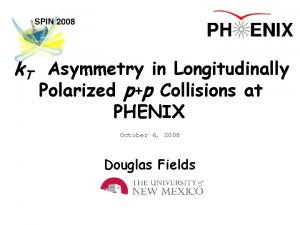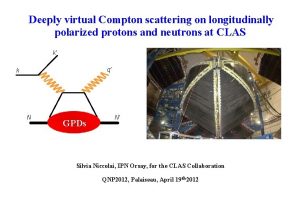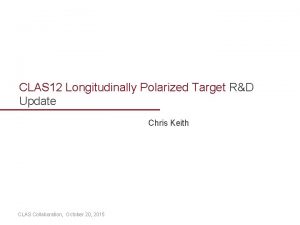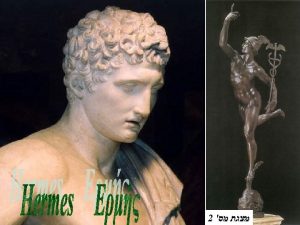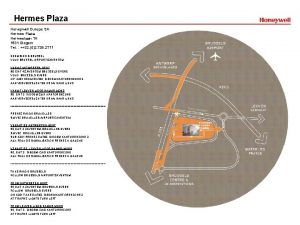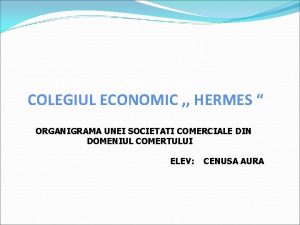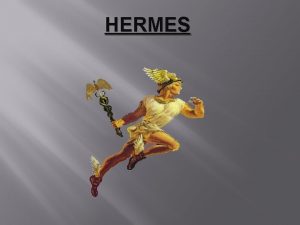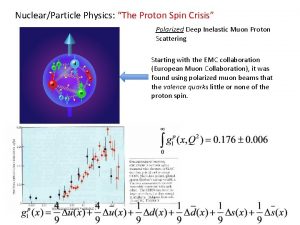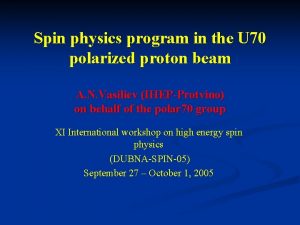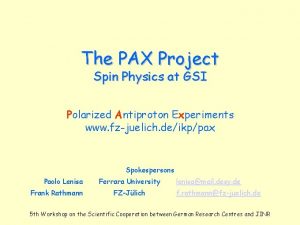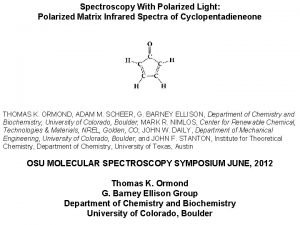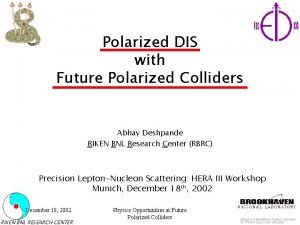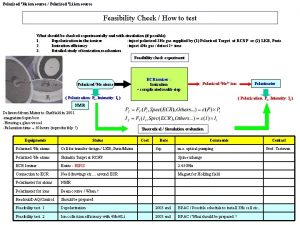Spin Physics results at HERMES with Longitudinally Polarized





![2. Polarised Structure Functions g 1 [HERMES Collaboration PRD 75 (2007)] HERMES data set 2. Polarised Structure Functions g 1 [HERMES Collaboration PRD 75 (2007)] HERMES data set](https://slidetodoc.com/presentation_image/2b4f5bd7302c51df0e3adc431cbd7881/image-6.jpg)
![Polarised Structure Functions: g 1 [Q 2>1 Ge. V 2 data only] Use only Polarised Structure Functions: g 1 [Q 2>1 Ge. V 2 data only] Use only](https://slidetodoc.com/presentation_image/2b4f5bd7302c51df0e3adc431cbd7881/image-7.jpg)




![Polarised Quark Distribution Functions [HERMES Coll. PRL 92(2004), PRD 71(2005)] First measurements of q Polarised Quark Distribution Functions [HERMES Coll. PRL 92(2004), PRD 71(2005)] First measurements of q](https://slidetodoc.com/presentation_image/2b4f5bd7302c51df0e3adc431cbd7881/image-12.jpg)
![Polarised Quark Distribution Functions [HERMES Coll. PRL 92(2004), PRD 71(2005)] u quarks: large positive Polarised Quark Distribution Functions [HERMES Coll. PRL 92(2004), PRD 71(2005)] u quarks: large positive](https://slidetodoc.com/presentation_image/2b4f5bd7302c51df0e3adc431cbd7881/image-13.jpg)
























![[HERMES Collaboration ar. Xiv: 0802. 2499 submitted to JHEP] [HERMES Collaboration ar. Xiv: 0802. 2499 submitted to JHEP]](https://slidetodoc.com/presentation_image/2b4f5bd7302c51df0e3adc431cbd7881/image-38.jpg)


- Slides: 40

Spin Physics results at HERMES with Longitudinally Polarized Targets Alessandra Fantoni (on behalf of the HERMES Collaboration) 1. The spin puzzle & the HERMES experiment 2. Polarised structure function g 1 3. Flavor decomposition & polarised quark distribution functions 4. New 5 -flavor extraction 5. New isoscalar extraction s 6. High-p. T hadrons, g 7. DVCS for probing GPD’s 8. Hint for Excl. processes International Workshop on Hadron Structure and Spectroscopy (IWHSS ’ 08) with Recoil Detector st nd Torino March 31 –April 02 , 2008

HERa MEasurement of Spin (DESY) 180 Researchers from 30 Institutions of 12 Countries Study of nucleon structure • double spin asymmetries (inclusive, seminclusive) • single spin asymmetries Data taking 1995 -2007 (seminclusive, transversity and exclusive processes)

1. The Nucleon Spin Structure and the HERMES experiment QPM: gluons are important ! G sea quarks: qs EMC 1988: zzle u p n S=0. 123± 0. 094± 0. 138 i p s don’t forget the orbital angular momentum! SLAC, CERN, DESY: S 0. 2 -0. 4 Polarised Deep Inelastic Scattering (DIS)

The Nucleon Structure HERMES: polarised DIS Unpolarised DIS • q from measurements on longitudinally polarised targets √ * √ • dq from measurements on transversely polarised targets • G from measurements on high p. T * • L from exclusive measurements (GPDs) * * first measurements only recently

Characteristiques of the HERMES experiment 27. 5 Ge. V (e+/e-) <Pb>~ 53± 2. 5 % Stern-Gerlach separation • resolution: dp/p~2%, dq<1 mrad • PID: leptons with e~98%, contam. <1% hadrons dual RICH: p, K, p 2<Eh<15 Ge. V 1 H→ <|P |> ~ 85 % t 2 H→ <|P |> ~ 84 % t 1 H <|Pt|> ~ 74 % gaseus atomic target, high polarisation, non diluited
![2 Polarised Structure Functions g 1 HERMES Collaboration PRD 75 2007 HERMES data set 2. Polarised Structure Functions g 1 [HERMES Collaboration PRD 75 (2007)] HERMES data set](https://slidetodoc.com/presentation_image/2b4f5bd7302c51df0e3adc431cbd7881/image-6.jpg)
2. Polarised Structure Functions g 1 [HERMES Collaboration PRD 75 (2007)] HERMES data set precise and complete
![Polarised Structure Functions g 1 Q 21 Ge V 2 data only Use only Polarised Structure Functions: g 1 [Q 2>1 Ge. V 2 data only] Use only](https://slidetodoc.com/presentation_image/2b4f5bd7302c51df0e3adc431cbd7881/image-7.jpg)
Polarised Structure Functions: g 1 [Q 2>1 Ge. V 2 data only] Use only deuteron data! MS assume saturation of S = G 1 d : theory from hyperon beta decay MS(a 8=0. 586± 0. 031) a 0= S (theory) x (exp) (evol) = 0. 330 ± 0. 011 ± 0. 025 ± 0. 028 ωD=0. 05± 0. 05 theory

q and G from inclusive data • uv and dv (quite) well determined: uv >0, dv <0 • q and G weakly constraint by data

How to further proceed ? • q and G from inclusive DIS data via evolution equations : requires wide kinematic range in Q 2 and x only fixed target spin experiments so far … need polarised collider to extend kinematic coverage OR: need more direct probes unpolarised DIS

Polarised semi-inclusive DIS Flavor tagging p+ ud K- p- Partonic Distribution Function (PDF) us ud Fragmentation Function (FF) z=Eh/(E-E’)

3. Polarised Quark Distribution Functions Polarised Parton Distribution Functions qf(x)=q+(x)-q-(x) Hadronic asymmetries to be measured known quantities Purity Functions
![Polarised Quark Distribution Functions HERMES Coll PRL 922004 PRD 712005 First measurements of q Polarised Quark Distribution Functions [HERMES Coll. PRL 92(2004), PRD 71(2005)] First measurements of q](https://slidetodoc.com/presentation_image/2b4f5bd7302c51df0e3adc431cbd7881/image-12.jpg)
Polarised Quark Distribution Functions [HERMES Coll. PRL 92(2004), PRD 71(2005)] First measurements of q by flavour decomposition
![Polarised Quark Distribution Functions HERMES Coll PRL 922004 PRD 712005 u quarks large positive Polarised Quark Distribution Functions [HERMES Coll. PRL 92(2004), PRD 71(2005)] u quarks: large positive](https://slidetodoc.com/presentation_image/2b4f5bd7302c51df0e3adc431cbd7881/image-13.jpg)
Polarised Quark Distribution Functions [HERMES Coll. PRL 92(2004), PRD 71(2005)] u quarks: large positive polarisation d quarks: negative polarisation - sea quarks (u, d, s, s): compatibile with 0 First direct 5 -flavor separation of polarised PDFs

4. Future: 5 -Flavor q(x) Extraction Revisited There’s still room for improvement: • Statistical uncertainties Not all possible asymmetries were utilized. Some may have significant leverage over the sea quarks (ks) • Systematic uncertainties The published Monte Carlo related systematic uncertainty was “hopefully conservative”. Confirm rigorously Potentially reduce!

Comparison of Uncertainties of Old and New Asymmetries: 2 -4 Ge. V deuterium gives additional pions and kaons Additional asymmetries available: Proton Deuteron Target HH+, HHP, P Ks, p 0, and L • Published • New

Correlating MC tune and q(x) systematic uncertainty 68% Contour Best MC Tune 1. Scan 2 surface around best Monte Carlo tune. Fit with quadratic Polynomial. 2. Find 68% contour. Two factors: c 2 • Height of 68% of ddimensional Gaussian Distribution. 2 min+C • The height of 2 minimum to accommodate model imperfection. PDG does something like this. pa parj a rj b 2 min 3. Compute Dq(x) along contour: Use Hessian method to sample along uncorrelated parameter directions. CTEQ does something like this. Puritie s Dq(x)

In reality… Scan the 2 surface around the best Monte Carlo tune. • Correlations are quite clear between parameters • Generate and diagonalize the matrix of 2 nd derivatives to find linear combinations that are uncorrelated Jetset/Lund c 2 surface in Fragmentation Parameter Basis • Blue ellipses represent 68% contour • Colored lines represent uncorrelated parameter directions

MC Multiplicities • Black dots are generated at the best Monte Carlo tune. • Colored dots are generated at the 68% contour in the uncorrelated parameter directions • 9 Hessian vectors 18 parameter sets to include So, where are the new q(x) uncertainties? ! Results not yet released, but should be greatly reduced (>50% in some bins).

5. New “Isoscalar” extraction of S [HERMES Collaboration ar. Xiv: 0803. 2993 submitted to Phys. Rev. Lett. ]

Isoscalar extraction - formalism

Isoscalar Formalism – cont’d

Extraction of ∫D(z)dz ’s Multiplicity corrected to 4 p of charged kaons in SIDIS from D target Curves: Continuous = calculated from x. S(x) Dashed = non-strange quark contribution to multiplicity Dash-dotted = strange quark contribution to multiplicity Dotted = best fit of ∫ D(z)dz using CTEQ 6 L PDFs 0. 2<z<0. 8

Experimental inclusive and kaon spin asymmetries Lepton-nucleon polarised cross section asymmetries A||, d(x) for inclusive DIS and A||, d. K(x) for SIDIS by a D target as a function of x for identified charged kaons Kaon asymmetry small and “slightly” positive

Non strange & quark helicity distributions 0. 02<xbj <0. 6 measured range Q 02 = 2. 5 Ge. V 2 a 8=∫ q 8=0. 586± 0. 031 from hyperon b decay assuming SU(3) deficit: violation First moments of helicity distributions: SU(3) symmetry or error octet Q = 0. 359 ± 0. 026∫ ±S(x)dx 0. 018 is 0 withinmissing strength at x below Earlier HERMES conclusions S = 0. 037 ± 0. 019 ± 0. 027 measured range of unpolarised sea confirmed q 8 = Q – 2 S = 0. 285 ± 0. 046 ± 0. 057

6. High p. T hadrons and sensitivity to g First HERMES g/g measurement [HERMES Collaboration, Phys. Rev. Lett. 84 (2000) 2584] Top cite 100+ First longitudinal double spin asymmetries for 2 hadrons Historical plot : first HERMES data and future projections

g/g extraction: methods I and II • Method I: – Factorize – Assumes • No sign change in â(x) • “flat” g/g(x) – No information on <x> of measurement – Gives average g/g over covered x range (0. 07<x<0. 7) • Method II: – Fit: find a g/g(x) such that – Assumes functional form for g/g(x) – Only small range in p. T – Gives g/g(x) and average x of measurement

G from method I Assuming g(x)/g(x) const over x : h+, h- antitagged: 4 points between 1. 05<p. T<2. 5 Ge. V h+, h- tagged: 1 point for p. T>1 Ge. V Pairs: 1 point for Ge. V 2 Only statistical errors are shown • Results for different data samples (diff. mixtures) agree within statistics • Consistency between the two hadron charges and the two targets • Dominating sample: Deuteron antitagged -> Used for Method II and syst. error analysis (charge combined)

G from method II (Anti-tagged only) • Several test functions • Final 2 functions used are polynomials with 1(2) free parameters • Fix: - g/g x for x 0 - g/g 1 for x 1 • | g/g(x)|<1 for all x • Difference between functions is a systematic uncertainty • Light shaded area: range of all data • Dark shaded area: fit center of gravity (span of the 4 pt bins)

G from method II 2/ndf 5 mainly due to highest p. T point • Model systematic is not included in fit • 1 -2 parameter function is too smooth • function 1 used as default and function 2 for systematics

Model systematic PYTHIA 6. 2 has been tuned: • fair agreement in tagged region (see plot vs kinematic variables) • less agreement in anti-tagged region • some failures in pt dependence • checks with LO p. QCD (collinear) • Uncertainties from each group (PYTHIA params. / PDFs / low-p. T asym. ) summed linearly to “Models” uncertainty • Experimental (stat. +syst. ) added in quadrature: syst. uncertainty (beam&target) from 4% scaling uncertainty to 14% on g/g

g/g results vs world data • Black and blue curves: p. QCD fits to g 1 • Black data points: CERN exp results • Red data point: Prel. HERMES Method I • Red curves: Prel. HERMES Method II: fit Δg(x)/g(x) with 2 functions such that g/g=0. 071 ± 0. 034 ± 0. 010 [HERMES Coll. Paper in progress]

7. GPDs and Exclusive Processes Q 2>>, t<< Q 2 • high Q 2 hard regime • high luminosity s~1/Q 4, 1/Q 6 • high resolution exclusivity t Quantum number of final state selects different GPDs: Vector mesons (r, w, f): H E ~ ~ Pseudoscalar mesons (p, h): H E ~ ~ DVCS (g) depends on H, E, H, E polarisation provides new observables sensitive to different (combinations) GPDs

Exclusive processes at HERMES e+/e 27. 5 Ge. V No recoil particle identification Identification exclusive events by missing mass Mx : …background estimated by MC

Deeply Virtual Compton Scattering (DVCS) A R HE t ly a Beam Spin Asymmetry on Beam Charge Asymmetry azimuthal asymmetries [HERMES Coll. PRL 87(2001)] Top cite 100+ [HERMES Coll. PRD 75 (2007)]



![HERMES Collaboration ar Xiv 0802 2499 submitted to JHEP [HERMES Collaboration ar. Xiv: 0802. 2499 submitted to JHEP]](https://slidetodoc.com/presentation_image/2b4f5bd7302c51df0e3adc431cbd7881/image-38.jpg)
[HERMES Collaboration ar. Xiv: 0802. 2499 submitted to JHEP]

Exclusive processes at HERMES > 2006 e+/e 27. 5 Ge. V Statistics with Recoil larger than pre-Recoil data taking With Recoil, DVCS events measured directly, bkgr rejected Installed Dec 05, commissioned and Pre-Recoil results can be later refined fully working Dedicated to exclusive processes New results expected soon 2006: 7 M DIS events e 20 M DIS events e+ 2007: 20 M DIS events e+

Conclusions • Inclusive data analysis on g 1 completed • Results from semi-inclusive DIS from purity analysis • Idea of new 5 -flavor extraction Takes full advantage of the HERMES longitudinal target data statistical power by incorporating many new asymmetries. Addresses (and will reduce considerably!) Monte Carlo related systematic uncertainties in a rigorous way. • New Isoscalar Extraction of s(x) Excellent confirmation of Monte Carlo based 5 -flavor extraction Suggests exciting new physics for s(x) in the x<0. 02 range • High-p. T hadrons with sensitivity to g • Possibility to probe GPD’s with Longitudinal and Transverse pol. targets • First hint for future Exclusive Results with Recoil Detector
 Polarized physics
Polarized physics Spin spin coupling
Spin spin coupling J coupling constant
J coupling constant Low spin and high spin complex
Low spin and high spin complex Spin up spin down
Spin up spin down J'
J' Chapter 80 brake system technology answers
Chapter 80 brake system technology answers Half-turn staircase plan
Half-turn staircase plan What is light
What is light Birefrengence
Birefrengence Polarized pluralist model
Polarized pluralist model Brain homunculus
Brain homunculus A polarizer blocks 75% of a polarized light beam.
A polarizer blocks 75% of a polarized light beam. Ideal polarizable electrode
Ideal polarizable electrode Index of refraction formula
Index of refraction formula Hermes name in greek
Hermes name in greek Mercury god name
Mercury god name Objeto dinamico e imediato
Objeto dinamico e imediato Afrodita knidská
Afrodita knidská Pescado hermes
Pescado hermes Aphrodite siblings
Aphrodite siblings Oke hermes
Oke hermes Homeric hymns to hermes
Homeric hymns to hermes Arhajska umetnost
Arhajska umetnost Demeter weaknesses
Demeter weaknesses Athena realm
Athena realm El panadero y su esposa
El panadero y su esposa Odysseus hermes
Odysseus hermes Hermes pensions management
Hermes pensions management Baston de hermes
Baston de hermes Sculture greche maschili
Sculture greche maschili Hermes projektstrukturplan
Hermes projektstrukturplan Zeus roman name
Zeus roman name Juniori hermes
Juniori hermes Name of roman helmet
Name of roman helmet Band aid hermes
Band aid hermes Hermes seks
Hermes seks Atenea mitologia griega
Atenea mitologia griega Mercurio atando sus sandalias
Mercurio atando sus sandalias Atributo de apolo
Atributo de apolo Oke hermes
Oke hermes
